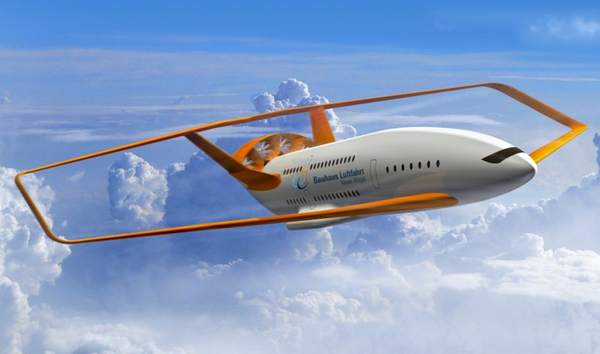As commercial airlines experiment with biofuels as alternatives for cleaner air travel, would an all-electric solution instead be the answer?
We’ve certainly seen our share of small electric airplanes that host a few people, but what about one that could hold over 100 passengers? That’s at the heart of an idea recently showcased at the yearly Berlin Air Show by Bauhaus Luftfahrt, a German think tank that “deals with the future of mobility in general and with the future of air travel in particular.”

The Ce-Liner, as reported by Aviation International News, is something the designers behind it believe could be in the air by 2035. The goal of the concept airline is to create a large scale passenger jet that could operate, according to Bauhaus Luftfahrt, entirely emission-free (in the case where electricity is produced from renewable sources) through an all-electric approach.
Part of what would be integral to this plane’s projected 900 nautical mile range is the airframe concept, said to be developed according to most-modern design principles. What stands out from the image you see above in this idea is the “C-wing,” which the designers believe would significantly improve the the aerodynamic efficiency. It has quite a different look compared to that of the EADS VoltAir, which would be a potential competitor in the carbon-free airline emissions race of the future.
This zero-emisisons commercial airliner would be rated to carry 189 passengers and with its range, according to AIN, would cover a vast majority of flights made by “aircraft of a similar size.” And in a piece of news that would make airlines quite happy, an operational assessment of the Ce-Liner by members of the Bauhaus Luftfahrt came to the conclusion that with an aircraft like this “potentially emission-free flight could possibly come without any operating cost penalty.”
The CE-Liner idea, at the minimum, is thought up in mind towards meeting the European Commission’s “Flightpath 2050” goals, which call for “how and where the European research priorities should be set to bring clear EU-added value, so as to preserve EU growth and competitiveness worldwide, whilst meeting market needs as well as energy and environmental challenges.”






